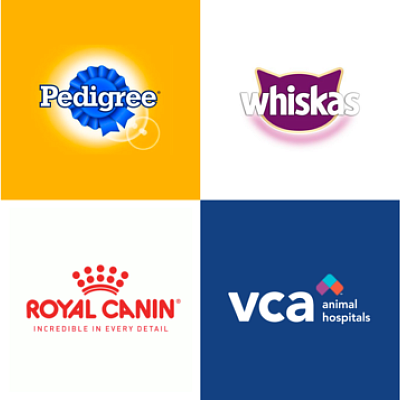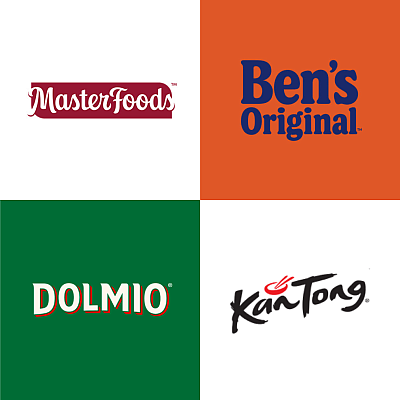Cocoa and Forests Action Plan
Current Situation
Forests serve as important reservoirs of carbon, and the clearance of primary forest cover causes serious increases in greenhouse gas emissions. Forests also provide habitat for half of all known plant and animal species, regulate local rainfall patterns and provide livelihoods for millions of people in rural communities.
More than five million farmers in West Africa, Southeast Asia and the Americas grow cocoa, often in areas where deforestation is an issue. Most are smallholders working modest plots of land planted with aging, unproductive cocoa trees that generate little income. There is an urgent need to help farmers grow more cocoa on existing farmland, without encroaching on remaining forests.
Mars Snacking sources cocoa from a number of countries including Brazil, Cameroon, Côte d’Ivoire, Colombia, Dominican Republic, Ecuador, Ghana, Indonesia, Nigeria, Papua New Guinea, Peru, Philippines and Vietnam, with the majority coming from Côte d’Ivoire, Ghana and Indonesia.
At Mars, we are committed to creating a more modern, inclusive, and sustainable cocoa supply chain for future generations. Since the launch of our Cocoa for Generations(Opens a new window) strategy in 2018, and as part of our Responsible Cocoa program, which sets out for suppliers our requirements for the cocoa we source, we have been accelerating our efforts to source cocoa from farms that have measures in place aimed at protecting children, preserving forests and improving farmer income.
This document explains our approach to preserving forests, consistent with Mars’ Deforestation and Land Use Change Position(Opens a new window). Preserving forests in cocoa is also a crucial element to meet Mars’ broader ambitions to hold flat our land use(Opens a new window), reduce greenhouse gas emissions(Opens a new window) from our value chain by 27% by 2025 (vs 2015 baseline), and achieve net zero(Opens a new window) greenhouse gas emissions across our full value chain by 2050.
Our Ambition
As part of our goal of sourcing 100% of our cocoa through our Responsible Cocoa program by 2025, we aim to achieve a deforestation and conversion-free supply chain (as defined by the Accountability Framework Initiative(Opens a new window) (AFi)).
More specifically, we will continue to work with our suppliers, partners, and government so that
- All cocoa we source is in compliance with applicable laws
- All cocoa we source is produced on land that has not been subject to deforestation or conversion of natural ecosystems after 31 December 2013 or the date specified in a credible landscape-level framework such as the Cocoa & Forests Initiative (CFI). Natural ecosystems1 include, but are not limited to, primary, secondary and regenerating forests; savannah; and peatland of any depth. Where validated, methodologies such as the High Conservation Value-High Carbon Stock Approach(Opens a new window) may be used to apply AFI’s definitions.
Following best practices around minimal deforestation and conversion allowance and honoring the principle of inclusion in the cocoa supply chain, minimal levels can be addressed through the monitored implementation of a corrective action plan. - All cocoa we source is respectful of the human rights of farming families, Indigenous People and forest-dependent communities
Our Approach: Mars’ Responsible Cocoa Specification
Prior to supplying cocoa to Mars under our Responsible Cocoa programs, our suppliers align to the expectations articulated in Mars’ Supplier Code of Conduct(Opens a new window), which describes Mars’ social, environmental and ethical expectations for suppliers.
In 2019, we introduced a Responsible Cocoa Specification which sets forth that we expect our suppliers to demonstrate they understand the risks in their supply chain, have a plan to address them, and demonstrate their action and impact.
Since then, we have been working with our suppliers to help them meet our Responsible Cocoa Specification, including, but not limited to:
- Farms that are part of our Responsible Cocoa program have their boundaries mapped with a polygon
- Farms that are part of our Responsible Cocoa program undergo a risk assessment and have in place measures to prevent non-compliance
- Farms that are part of our Responsible Cocoa program are monitored for compliance with Mars’ Responsible Cocoa Specification, with compliance verified by a third-party
- Cocoa volumes sourced through our Responsible Cocoa program are monitored to prevent the mixing with untraced cocoa from the farm to the point where suppliers take possession of the beans
Where we believe insufficient progress is being made, we reserve the right to step away from suppliers who do not meet our Responsible Cocoa Specification within specified time frames. In doing so, we would seek to minimize harm to smallholder farmers in the supplier’s value chain.
Multi-Stakeholder Collaborations to scale and sustain impact
The challenges the cocoa industry faces are complex and must be tackled collectively. We will continue to work with government, industry and civil society stakeholders on collaborative efforts to preserve forests and natural ecosystems. Together with our partners, we aim to:
- Support governments to implement and enforce forest protection policies, as our own ambitions rely on these being put into effect
- Work within credible, landscape-level frameworks where these exist and take additional steps to support enhanced agroforestry, reforestation or forest restoration and community engagement
An illustration of Mars’ collaborative efforts is our membership in the World Cocoa Foundation's(Opens a new window) Cocoa & Forests Initiative(Opens a new window) (CFI) and being a signatory to the CFI commitments(Opens a new window) to halt deforestation and restore forest in the global cocoa supply chain, with an initial focus on Côte d’Ivoire and Ghana, where more than 65% of cocoa is grown and which are major origins for cocoa sourced by Mars.
In 2018, we embarked on a collective journey to make a positive impact on the environment and communities in Côte d'Ivoire and Ghana, launching country-level action plans aligned with the three pillars of the Cocoa & Forests Initiative, prioritizing forest protection and restoration, sustainable production and the livelihoods of farmers livelihoods, and community engagement and social inclusion.
Working tirelessly alongside our suppliers and technical expert organizations, we have made substantial progress towards achieving our objectives. We are proud to announce the successful completion of our CFI1.0 targets, a testament to our dedication and collaborative efforts.
However, our journey does not end there. We remain resolute in our commitment to the cocoa farmers and landscapes of Côte d'Ivoire and Ghana, as well as our collaboration with their governments and over 30 cocoa and chocolate companies. To solidify our dedication, we have developed new action plans in partnership with our suppliers, outlining our activities and investments in the three pillars of the Cocoa & Forests Initiative until 2025.
Discover our CFI 2.0 Progress Report(Opens a new window).
Supply Chain transparency
We are seeking to build an efficient and highly transparent supply chain that supports our goal of preventing deforestation and conversion of natural ecosystems. Our ambition is traceability from farm to the point where suppliers take possession of the beans such that mixing with untraced cocoa is prevented, globally by 2025, with some countries achieving this earlier. We support the development of national traceability frameworks to enable this process where relevant.
Over time, we have improved our ways to report on our supply chain. In 2019 we reported how much of the cocoa we source was traceable to a country of origin, to a farmer group within that country, and to the individual farms supplying that group. For increased transparency, we also published a list of the tier-1 suppliers we sourced cocoa from. Download our Mars Cocoa Supply Chain Disclosure – Tier 1 2021 Update here(Opens a new window).
In 2020, we began publicly sharing an interactive map showing the names, locations and total number of farmers in each farmer group from which we sourced cocoa as part of our Responsible Cocoa program. Because the supply chain may change throughout the year, we are committed to updating this map annually as we advance toward our goal of a 100% deforestation and conversion-free supply chain for cocoa we source by 2025.
While the figures demonstrate our progress, we can only truly understand the real impact of our efforts by hearing first-hand from the cocoa farming communities. That’s why our interactive map also includes Farmer Voices, an opportunity to discover the individual stories of men and women in the cocoa growing villages and communities that we depend on, like Lucas in Côte d’Ivoire, Evy in Indonesia and Nadia in Ecuador.
Interactive Map of Farmer Groups that are part of Mars’ Responsible Cocoa Program
Download(Opens a new window) the list of TIER 2 Farmer Organizations that work with the suppliers Mars sources cocoa from. This information will be regularly updated after the end of each crop year.
We will work with governments and tier-1 cocoa suppliers to implement our action plans, while providing clear guidelines and support. Where we believe no further progress is possible, we reserve the right to step away from suppliers who do not meet our Responsible Cocoa specifications within the required time frame. In doing so, we would seek to minimize harm to smallholder farmers in the supplier’s value chain where possible. Where necessary, we will seek support from expert partners as we work towards our ambition.
Advancing the Resilience of the Cocoa Supply Chain Through Science and Technology
For more than four decades, we have been investing in science and technology (S&T) and conducting research through our diverse cocoa research centers, demonstration farms, and pilot projects across Brazil, Ecuador, Indonesia, and our cocoa plant science hub at Davis, California.
We are convinced that good science is needed to help ensure healthier, more resilient, and more productive plants that lead to thriving cocoa farmers and contribute to forest preservation by helping farmers grow more cocoa on less land. That’s why investing in innovative agricultural research underpins Cocoa for Generations, our cocoa sustainability strategy launched in 2018.
Discover what we’re doing about it: leading from the front.
Download our Cocoa and Forests Action Plan.
Download our latest C4G progress update.
1 In the absence of data on conversion of natural ecosystems, we use conversion of natural forests as a proxy.



